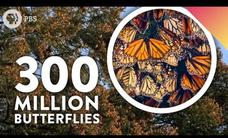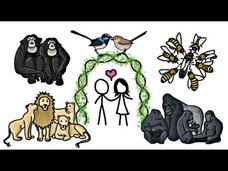Curated OER
Get to Know Birds
Students observe animals in their natural habitats. In this bird identification lesson, students observe birds by watching and listening and report on the sightings they made. Students also document bird signs such as tracks, nests and...
Nature League
Adaptations at Animal Wonders - Field Trip
The word camouflage was first found use in English in the 1917 edition of Popular Science magazine. Camouflage, along with many other variations, star in the second video in a four-part series about adaptations. Join the virtual field...
Curated OER
Bird Binoculars
Pupils create binoculars using empty toilet paper rolls, yarn, and glue in this Art lesson for the early-elementary classroom. This Art project could be combined with a Science unit on Birds or nature, and could include a short field...
American Battlefield Trust
Civil War Trust Animated Map: Shiloh
Take a birds-eye view of the Civil War with an instructive video about the Battle of Shiloh. Paced over the four-day period in which Confederate troops were forced into retreat, the video presents both a strategic and tactical glimpse of...
Curated OER
What Can You Learn About Dinosaurs by Watching an Ostrich?
Learners collect a variety of drawings of dinosaurs and maps of a zoo. Students observe an animal in motion during a field trip to a zoo from reproducible worksheets. Learners study about the process by which scientists and film...
Be Smart
Why Do More Species Live Near the Equator?
The tropics contain about 40 percent of the area on Earth. Viewers take a trip to Peru as an entrancing video from a larger biology playlist explores the region. It explains the facts and theories about the biodiversity near the equator....
Curated OER
Bird airport control
Students identify the various species of birds found in the wetlands. Students observe and record the key skills involved in scientific inquiry. Students handle and interpret data gathered on a field trip which reveals patterns and...
Curated OER
What Can You Learn About Dinosaurs by Watching an Ostrich?
Pupils often find dinosaurs interesting. However, it is doubtful that they have actually thought about the process by which scientists (and film animators) develop working models of dinosaurs. Reproducible worksheets provide guidelines...
Be Smart
The Mystery of the World’s Greatest Butterfly Migration
Follow the migration of the monarch butterfly from northern North America to southern Mexico. A video explains how monarch butterflies navigate their migration north in the spring and south in the fall. Pupils learn how it takes multiple...
Curated OER
Food Webs in a Pond
Students explore food chains and food webs in a pond and identify common creatures found in ponds. They look for tadpoles, fish, mites and other creatures in a pond during a field trip for first hand research.
Channel Islands Film
Natural Resources, and Human Uses of Plants and Animals
As part of their study of the restoration projects on Santa Cruz Island, class members demonstrate their understanding of the connections among plant life, animals, and the actions of humans by crafting a model that reveals these...
Curated OER
Dinosaur Time Capsule
Third graders research prehistoric life using educational software. They design a prehistoric life while showing the use of appropriate scale and names for the prehistoric life. They follow an internet link to participate in a virtual...
MinuteEarth
Are any Animals Truly Monogamous?
Known for being one of the few monogamous animals, Diplozoon paradoxum live on fishgills. The video details animals that appear monogamous and the research on their mating habits. From open polygamy to cheating, various species strive...
Curated OER
Discovering the Wetlands!
Students name wetland plant and animal life. In this ecosystem lesson students go birdwatching and interpret native plants through art.
Curated OER
Natural Selection I
Eighth graders list the steps of Darwin's natural selection. They demonstrate the process of natural selection in a predation activity. Students create paper origami frogs to race across the floor and analyze the differences in the...
Curated OER
Outdoor Seed Sowing
First graders identify vegetables and flowers that can be grown from seed. In this seed sowing lesson plan, student learn the correct spacing and planting of various types of seeds. Students label plants.

















